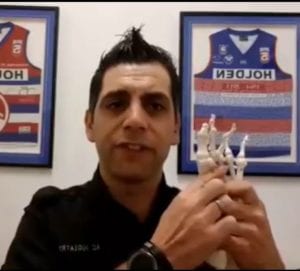[vc_row][vc_column][tm_spacer size=”lg:10″][tm_spacer size=”lg:10″][/vc_column][/vc_row][vc_row][vc_column][vc_column_text]
What is Neuroma?
[/vc_column_text][/vc_column][/vc_row][vc_row][vc_column][vc_column_text]Morning guys, Andre here, Owner and senior podiatrist at Ac podiatry. I’m early morning it’s nice and chilly in Adelaide today.
And today guys I wanted to share with you about neuromas, having a conversation with the girls yesterday on my drive back from Clare, and we’ve had three four or five neuromas in the last couple of days that the girls are dealing with.
And I wanted to get on and it’s obviously quite topical at the moment and it got me thinking well why and what can I do to, to kind of help you guys.[/vc_column_text][vc_column_text css=”.vc_custom_1626753835030{margin-top: 10px !important;}”]Let’s talk about the sensation of burning or tingling across the ball of the foot.[/vc_column_text][vc_column_text css=”.vc_custom_1626753941095{margin-top: 15px !important;}”]
How would you know if you have Neuroma?
[/vc_column_text][vc_column_text css=”.vc_custom_1626754666422{margin-top: 10px !important;}”]Generally speaking what you’ll find is that across this part of the foot here, you’ll get a burning, tingling, run down into the toes,

it can be really quite debilitating it can stop you wearing those wonderful high heels that you like wearing or doing the activity that you’d really like to do such as netball and others, but it tends to affect ladies, more than men.
The primary reason for that is this kind of narrow shoe that kind of really compresses the forefoot, and you have a nerve that sits in between these long bones, and when that gets squashed that can actually cause a real pain aggravation, over time, that nerve can thicken and that thickening is what we call a neuroma.
[/vc_column_text][vc_column_text css=”.vc_custom_1626754118406{margin-top: 10px !important;}”]Now, common misconception is that you need to kind of either have surgery to have the neuroma cut out, or cortisone injections to reduce the swelling and pain aggravation and look both of those do work, but you’re effectively treating the symptoms are not the cause, especially because it seems to manifest in a younger cohort of patients, so women in the 20s and 30s specifically, why would we want to do that, then we’ve got a lot more time to be running around on our feet.[/vc_column_text][vc_column_text css=”.vc_custom_1626754168458{margin-top: 15px !important;}”]
How to deal with it?
[/vc_column_text][vc_column_text css=”.vc_custom_1626754226277{margin-top: 10px !important;}”]One tip if you’re having that burning and aggravation it’s just getting to assure, it’s a little bit wider, I kind of can still be a heel if you like, but you just don’t want to get that squash and so if you can prevent that squashing you’re generally going to feel a little bit easier and that’s without surgery or anything like that, or cortisone.
Sometimes, a change in shoes not going to do it and that’s just the reality. And there are plenty of other strategies we can use things like dry needling, or acupuncture, you can use manual therapy and mobilization to kind of free up the joints, or what we call hydrate dilation where you effectively put a little bit of local anesthetic in here to kind of spread it apart and settle some of the pain that way.[/vc_column_text][vc_column_text css=”.vc_custom_1626754370112{margin-top: 10px !important;}”]I hope you’ve taken something away from this today, it is a really common problem and, suddenly, obviously we see more in winter because people were more closing shoes rather than summer where we tend to wear open shoes and don’t get that squashing.
This is Andrea again. Hope you have a great day and I look forward to catching you soon. Okay,[/vc_column_text][/vc_column][/vc_row]

